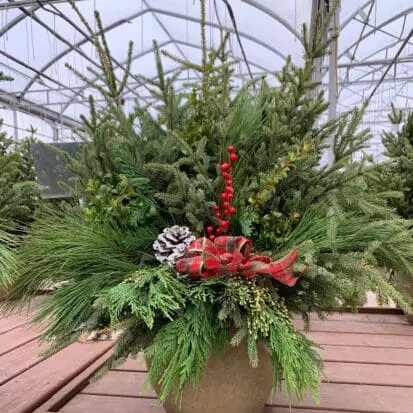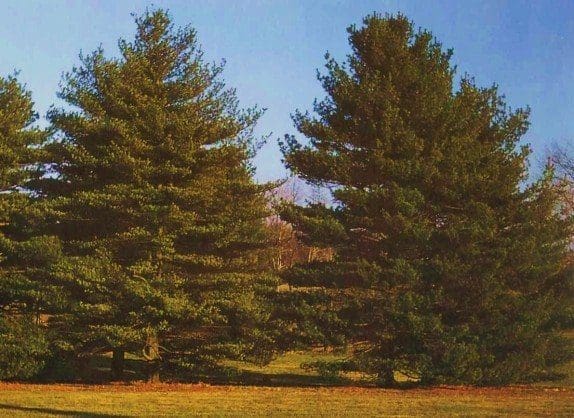By David Schreier
Eastern White Pine: an Evergreen for all Seasons
The Eastern White Pine (Pinus strobus) is widely planted throughout the eastern United States as a forest and timber tree and is commonly seen in home landscapes as an ornamental specimen tree with its soft, dense, feathery, blue-green needles in bundles of five. The straight and slender needles form triangular clusters angled toward the branch tips. The Eastern White Pine is eminently suitable as a landscape tree because it is graceful in youth, sturdy and compact in middle life, and most picturesque in age with its dark gray bark that is often tinged with purple and slightly to conspicuously furrowed. The Columnar White Pine (Pinus strobes var. fastigiata) has a narrow-pyramidal form with ascending branches and can be planted nearer to a residence. It grows to eight-feet in width.
A mature eastern white pine is not only the most conspicuous and beautiful components in the landscape, but also a good food source for wildlife. Red-breasted nuthatches, black-capped chickadees, red crossbills, squirrels, chipmunks, and mice feed on the seeds in the pendulous cones which take two years to mature. The cone’s thin scales are often dotted with sap. Beavers, porcupines, and white-tailed deer browse on the foliage and twigs.
When considering an eastern white pine for the landscape, as a specimen tree or in a wildlife garden, remember that this is a fast-growing tree eventually reaching a great size –eighty feet or more – and needing ample room to do so. All pines are light-loving trees and become scraggly and unsightly when shaded. If considering them for planting near roadways, remember they can suffer from salt injury.
The Eastern White Pine grows best in well-drained sandy loam soils and prefer a light diet rather than an over abundance of plant food. In sandy loam soils the tree develops a long tap-root which serves to anchor them, but makes it difficult to transplant mature specimens.
Did You Know?
The word Strobus was anciently used for an unidentified incense-bearing tree, transferred by the celebrated Swedish naturalist Carulus Linnaeus (1707-1778) to the eastern white pine (Pinus strobus). In England the eastern white pine is known as the Weymouth pine, from Captain George Weymouth who in discovered the tree in Maine in 1620. Lord Weymouth (Thomas Thynne, 1st Viscount Weymouth) the First Lord of Trade and Plantations in 1705 planted it extensively on his estate at Longleat House more than 300 years ago. The eastern white pine grows tall and slender and was used for ship masts for the British Royal Navy.
Smaller specimens of the eastern white pine are popular as Christmas trees. The hold their needles long after they have been harvested and are well suited for people with allergies, as they give little to no aroma.























0 Comments